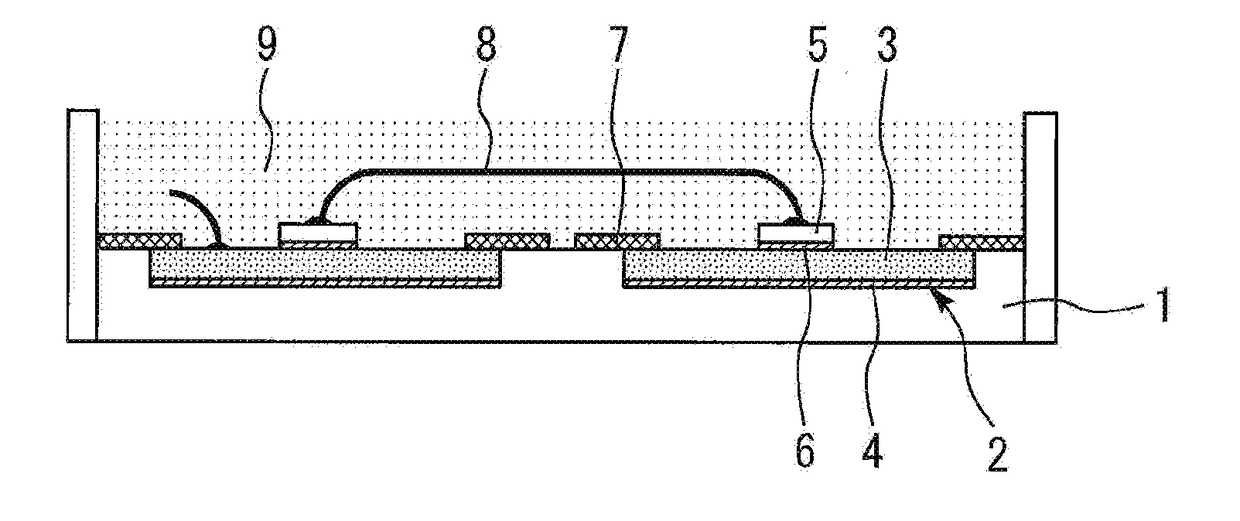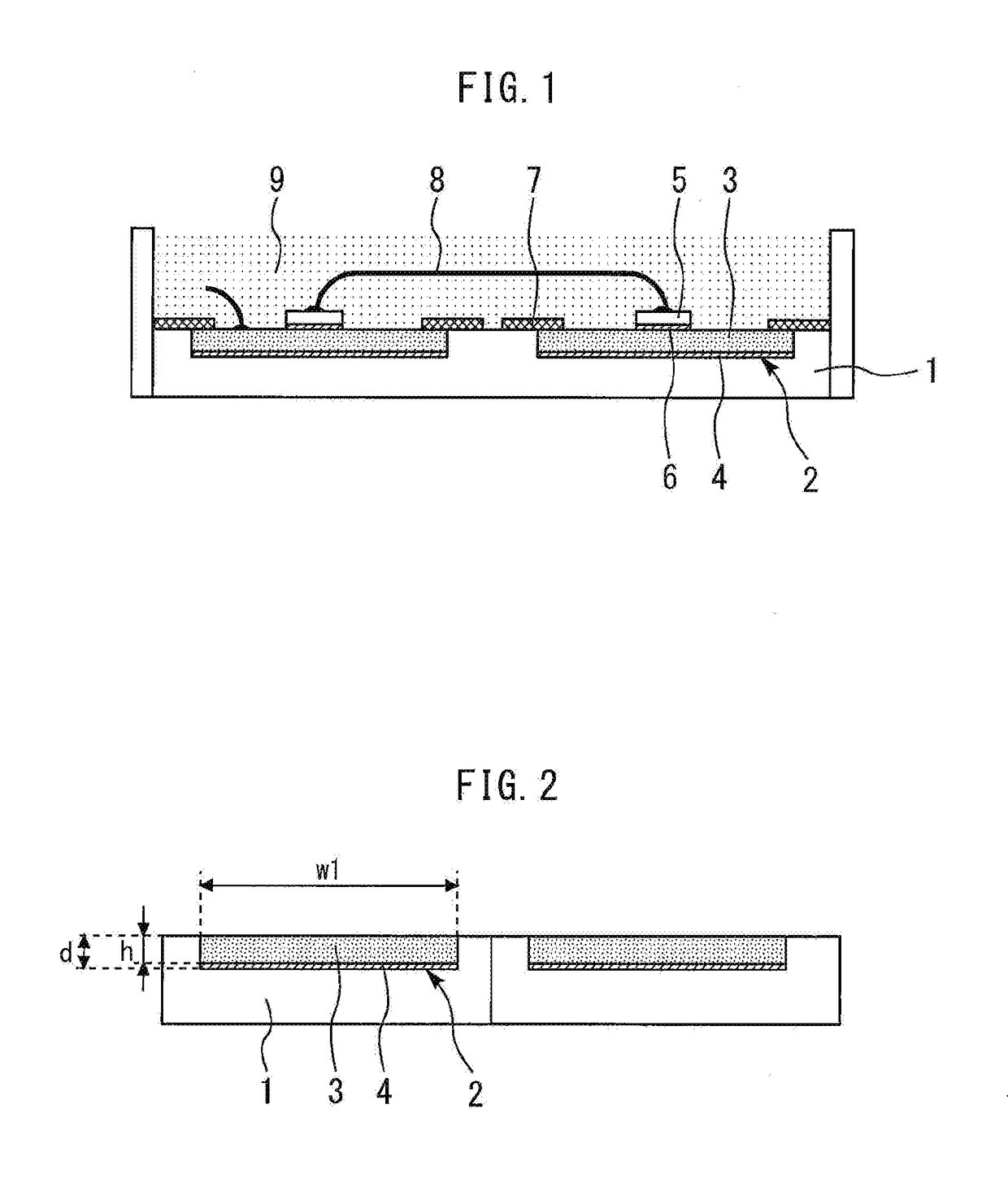Semiconductor power module and power conversion apparatus
a technology of power conversion apparatus and semiconductor, applied in the direction of semiconductor devices, solid-state devices, basic electric elements, etc., can solve the problem of sub-electrode destruction, and achieve the effect of improving reliability
- Summary
- Abstract
- Description
- Claims
- Application Information
AI Technical Summary
Benefits of technology
Problems solved by technology
Method used
Image
Examples
first embodiment
[0018]FIG. 1 is a cross-sectional view illustrating a semiconductor power module according to a first embodiment of the present invention. A concave portion 2 is formed on a top surface of an insulating substrate 1 of ceramic or the like. A substrate electrode 3 is embedded in the concave portion 2 via solder 4. FIG. 2 is an enlarged cross-sectional view of the insulating substrate and the substrate electrode according to the first embodiment of the present invention. The substrate electrode 3 has a thickness h of 200 μm to 800 μm, which is equal to or less than a depth d of the concave portion 2.
[0019]A semiconductor device 5 is bonded onto the substrate electrode 3 via solder 6. A polyimide-based or polyamide-imide-based insulating resin 7 having a thickness of 5 μm to 100 μm covers the top end part of the substrate electrode 3. A wire-interconnect 8 for applying a voltage is connected to the top surface of the semiconductor device 5. Silicone gel 9 covers the substrate electrode ...
second embodiment
[0025]FIG. 10 is a cross-sectional view illustrating a semiconductor power module according to a second embodiment of the present invention. FIG. 11 is an enlarged cross-sectional view of an insulating substrate and a substrate electrode according to the second embodiment of the present invention. Unlike the first embodiment, a width w2 of the substrate electrode 3 is smaller than a width wl of the concave portion 2. The insulating resin 7 covers the top end part and the side face as well of the substrate electrode 3. A thickness of the insulating resin 7 is smaller than (w1=w2) / 2. The rest of the configuration is similar to that of the first embodiment.
[0026]Next, a method of manufacturing the semiconductor power module according to the present embodiment will be described. FIGS. 12 to 14 are cross-sectional views illustrating the method of manufacturing the semiconductor power module according to the second embodiment of the present invention. First, steps in FIG. 3 and FIG. 4 wil...
third embodiment
[0030]In this embodiment, the semiconductor power module according to the first or second embodiment described above are applied to an electric power conversion device. The electric power conversion device is, for example, an inverter device, a converter device, a servo amplifier, or a power supply unit. Although the present invention is not limited to a specific electric power conversion device, a case where the present invention is applied to a three-phase inverter will be described below.
[0031]FIG. 15 is a block diagram illustrating a configuration of an electric power conversion system to which the electric power conversion device according to the third embodiment of the present invention is applied. This electric power conversion system includes a power supply 100, an electric power conversion device 200, and a load 300. The power supply 100 is a DC power supply and supplies DC power to the electric power conversion device 200. The power supply 100 can be composed of various co...
PUM
 Login to View More
Login to View More Abstract
Description
Claims
Application Information
 Login to View More
Login to View More - R&D
- Intellectual Property
- Life Sciences
- Materials
- Tech Scout
- Unparalleled Data Quality
- Higher Quality Content
- 60% Fewer Hallucinations
Browse by: Latest US Patents, China's latest patents, Technical Efficacy Thesaurus, Application Domain, Technology Topic, Popular Technical Reports.
© 2025 PatSnap. All rights reserved.Legal|Privacy policy|Modern Slavery Act Transparency Statement|Sitemap|About US| Contact US: help@patsnap.com



